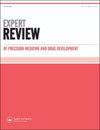How feasible is the stratification of osteoarthritis phenotypes by means of artificial intelligence?
IF 1.2
Q4 PHARMACOLOGY & PHARMACY
Expert Review of Precision Medicine and Drug Development
Pub Date : 2021-01-01
Epub Date: 2020-11-23
DOI:10.1080/23808993.2021.1848424
引用次数: 5
Abstract
Osteoarthritis (OA) is a common and serious disease that involves all of the tissues of an affected joint (e.g., cartilage, bone, meniscus, tendon/ligament, synovium) and can affect one or multiple joints in an individual person, most often the finger joints, knees, hips, and spine [1]. OA is a major and growing contributor to disability worldwide and is associated with increased comorbidity and excess mortality [1]. Management of OA is focused on modestly effective lifestyle/behavioral interventions such as increased physical activity and weight loss, with pharmacologic therapies directed toward temporary symptomatic relief [2]. Although many clinical trials have been conducted, there are still no effective disease-modifying therapies, no proven way to prevent progression, and no cure. This is at least in part due to the lack of appreciation of, and accounting for, the heterogeneity of this complex disease in trials to date [3]. In general, most trials have enrolled all individuals with knee OA defined as the presence of symptoms (e.g., pain, aching, and stiffness) and moderate to severe radiographic change (e.g., osteophytes or joint space narrowing) in at least one knee. This does not account for the diverse mechanisms of disease development, which can be due to mechanical dysfunction, prior injury, metabolic factors, inflammation, or combinations of these. Nor does it address the diversity of presentations, burden of disease (i.e., number/severity of involved joints), chronicity, or numerous other aspects of the disease process in a given individual that may subsequently affect their response to the proposed therapy. This brief editorial review seeks to summarize recent work in the area of machine learning and osteoarthritis phenotyping.通过人工智能手段对骨关节炎表型进行分层的可行性如何?
本文章由计算机程序翻译,如有差异,请以英文原文为准。
求助全文
约1分钟内获得全文
求助全文
来源期刊

Expert Review of Precision Medicine and Drug Development
PHARMACOLOGY & PHARMACY-
CiteScore
2.30
自引率
0.00%
发文量
9
期刊介绍:
Expert Review of Precision Medicine and Drug Development publishes primarily review articles covering the development and clinical application of medicine to be used in a personalized therapy setting; in addition, the journal also publishes original research and commentary-style articles. In an era where medicine is recognizing that a one-size-fits-all approach is not always appropriate, it has become necessary to identify patients responsive to treatments and treat patient populations using a tailored approach. Areas covered include: Development and application of drugs targeted to specific genotypes and populations, as well as advanced diagnostic technologies and significant biomarkers that aid in this. Clinical trials and case studies within personalized therapy and drug development. Screening, prediction and prevention of disease, prediction of adverse events, treatment monitoring, effects of metabolomics and microbiomics on treatment. Secondary population research, genome-wide association studies, disease–gene association studies, personal genome technologies. Ethical and cost–benefit issues, the impact to healthcare and business infrastructure, and regulatory issues.
 求助内容:
求助内容: 应助结果提醒方式:
应助结果提醒方式:


